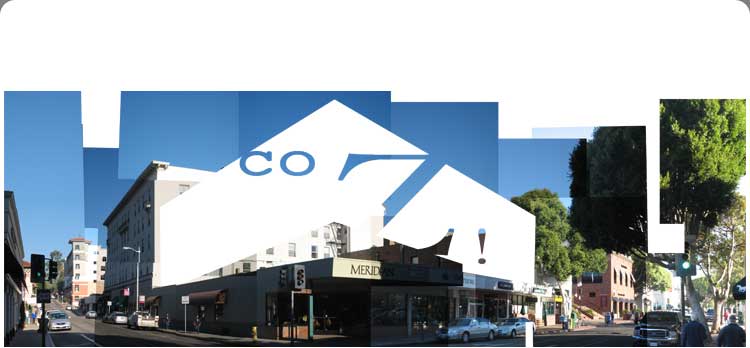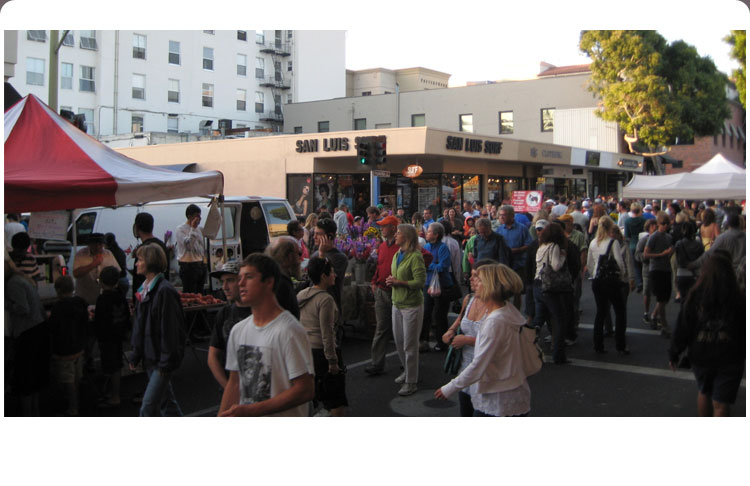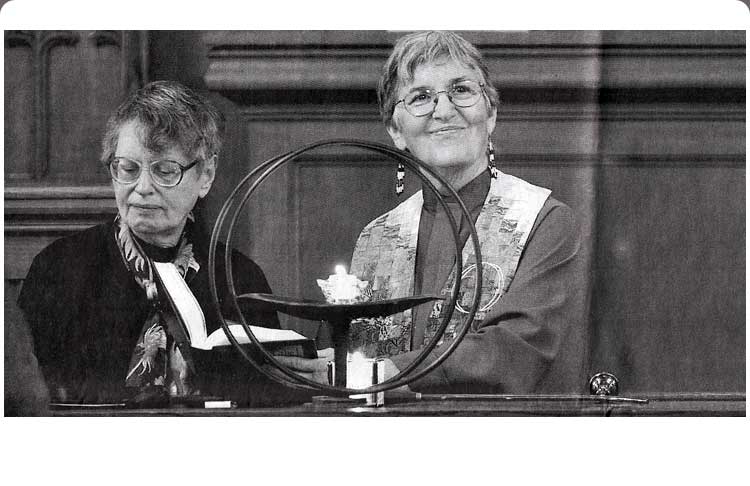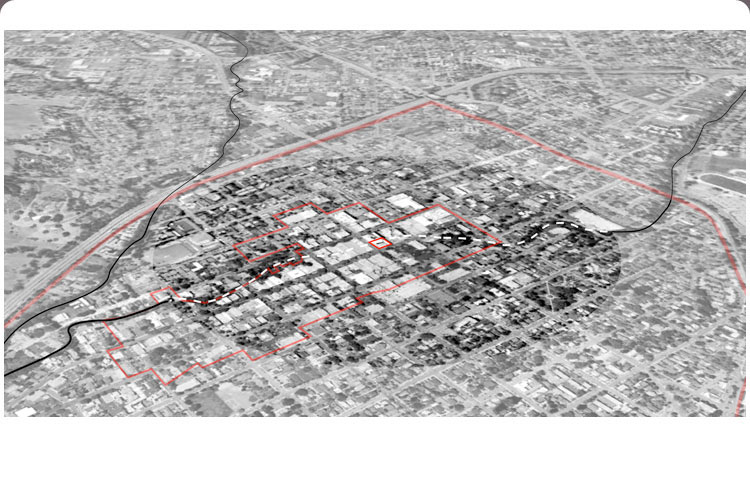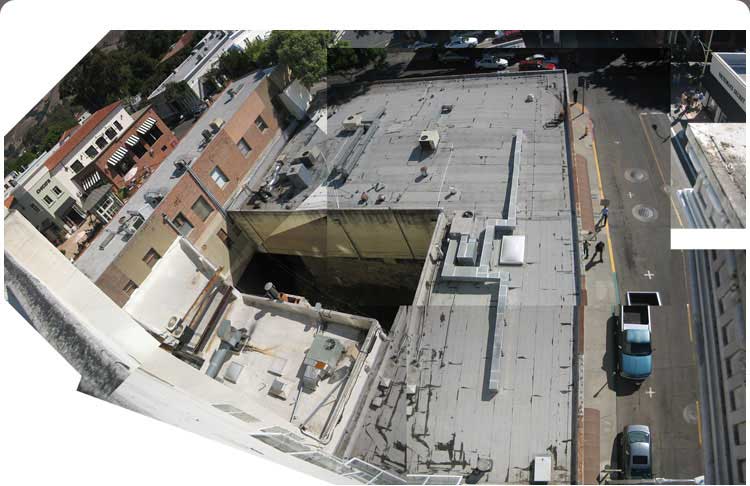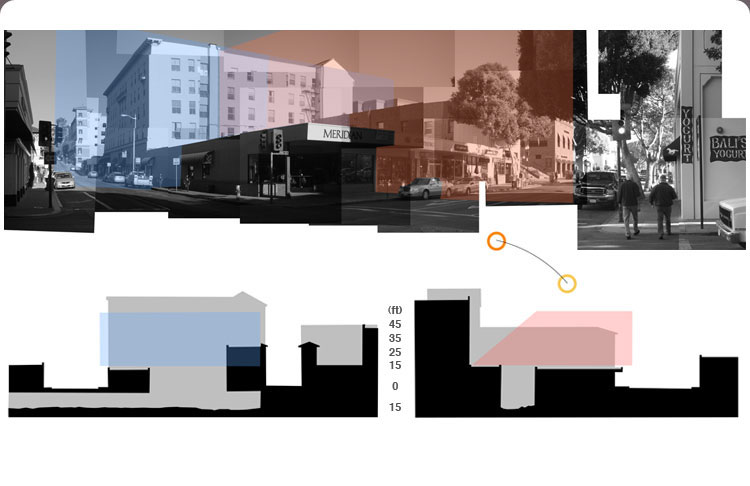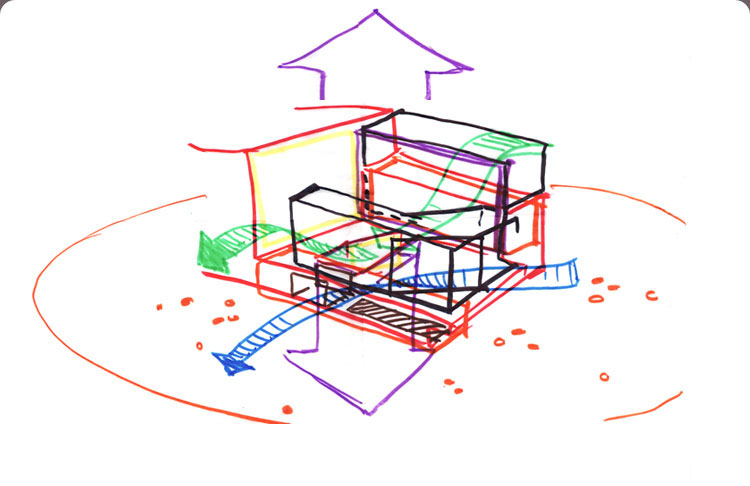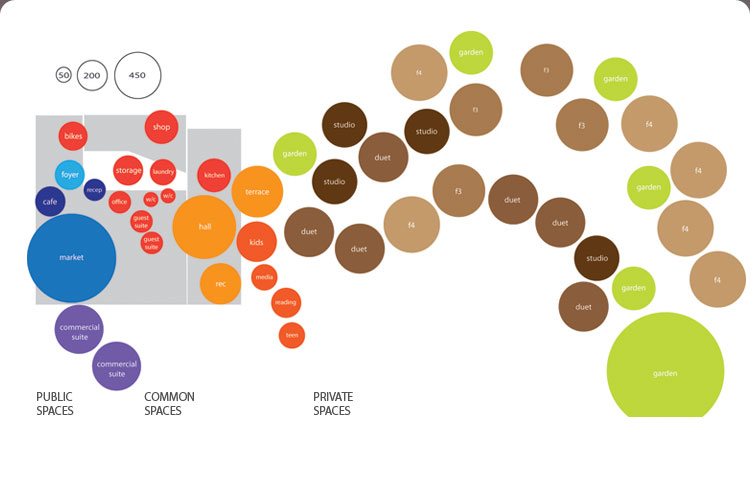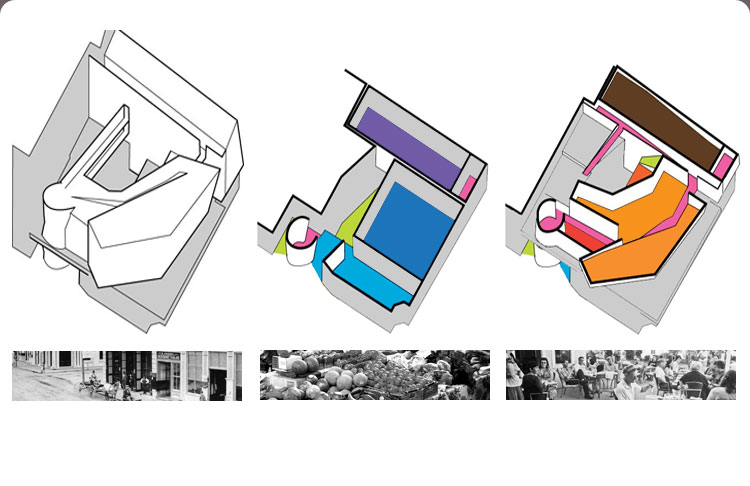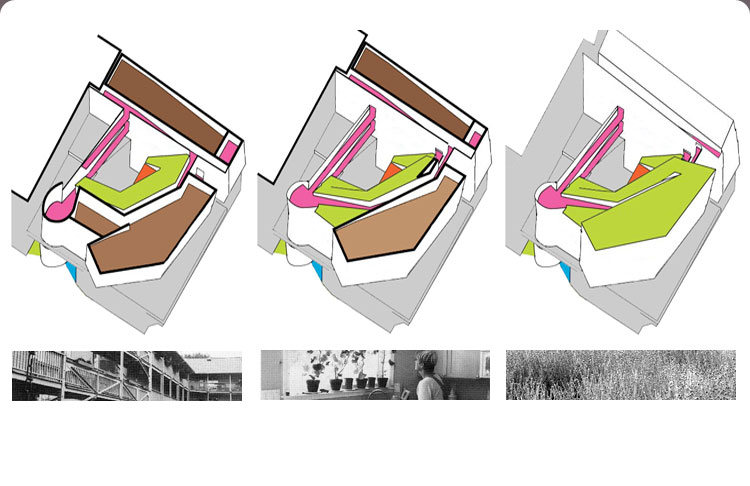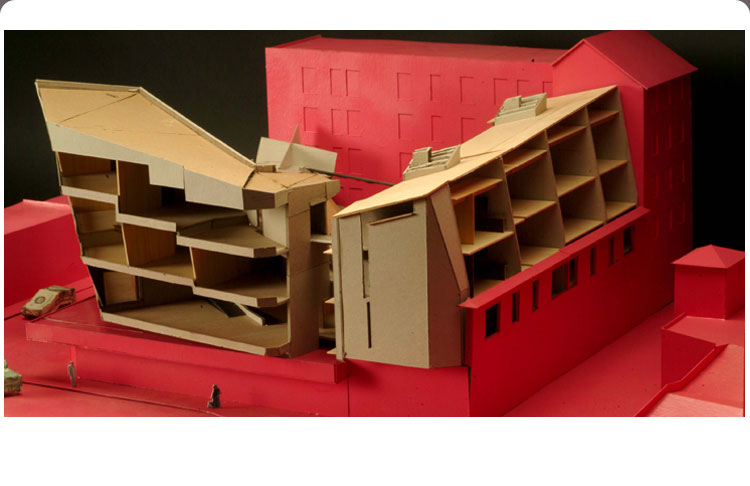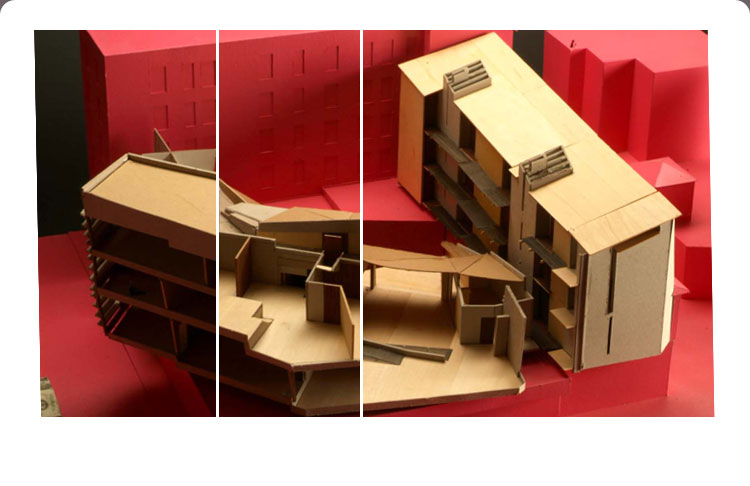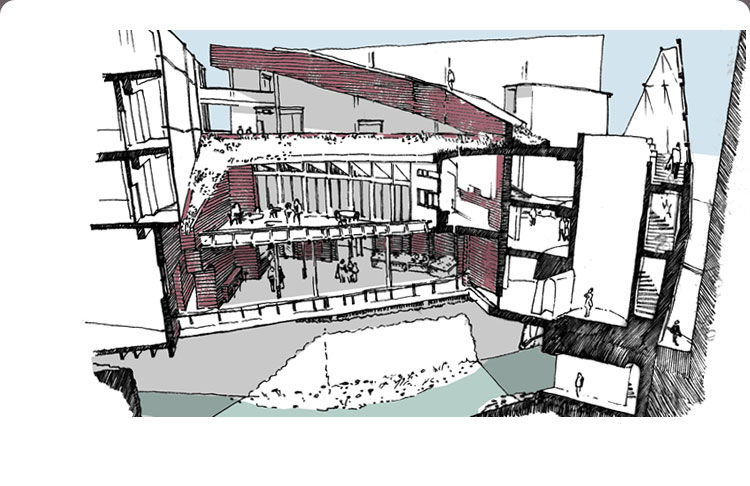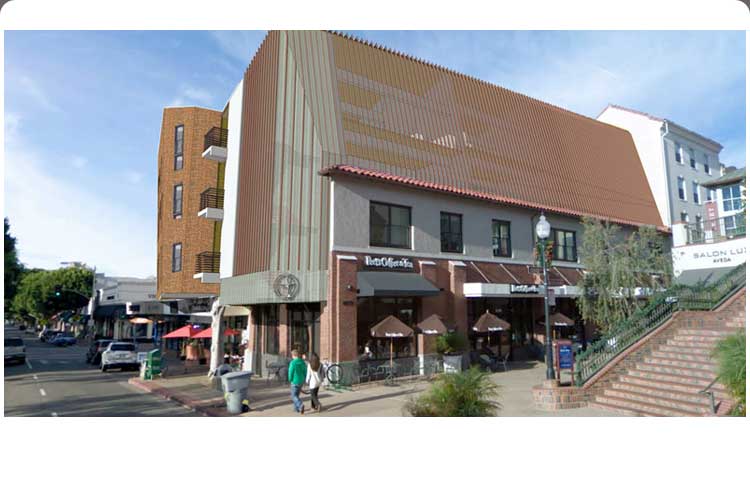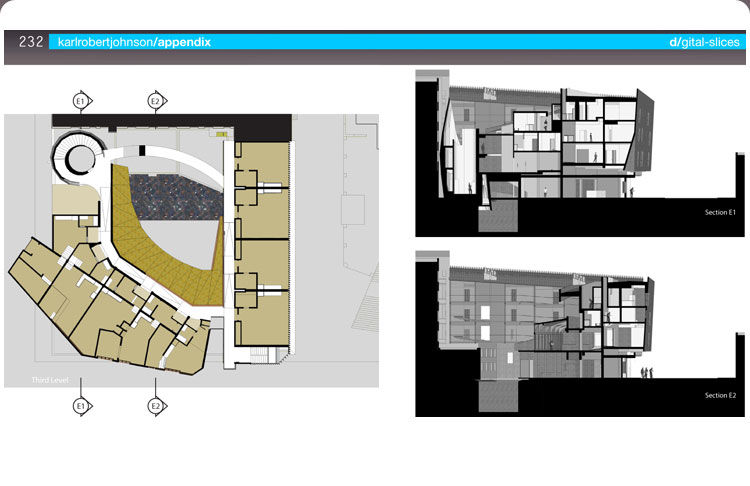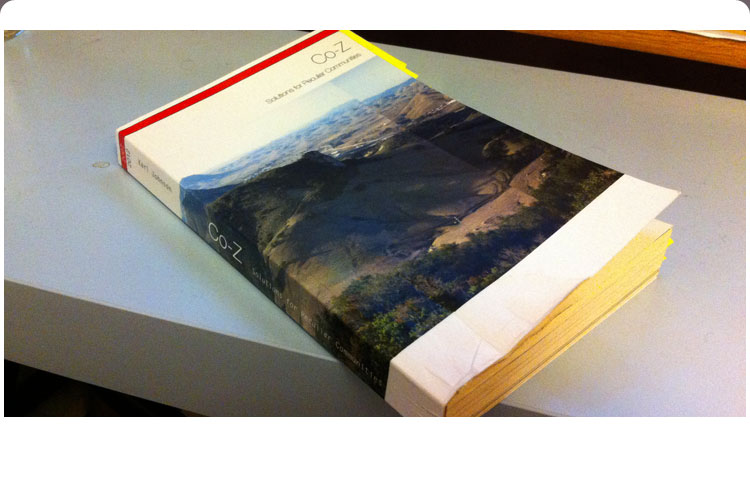A 20-unit cohousing infill project, Co-Z investigates the relationships between a community and its town, a town and its Surround and a religion and an inherited territory-a complex codependency reinforced through daily rituals.
San Luis Obispo is an insular community on the Central Coast of California, known for its year-round pleasant climate, picturesque surroundings and devotion to local businesses centered in an historic downtown. Since colonization it served as a stopping point between northern and southern California, first for the missionaries and, as they developed, the railroad and automobiles.
The SLO worldview could be defined as resources accessible within 100 miles transit, geographic landmarks/barriers, or more immediately by visual or unaided access, by watersheds, or by municipal infrastructure. This is what it means to evaluate the Surround as a set of design considerations.
The commercial patrons of downtown SLO consist predominately of middle class families, retired couples, tourists and college students. Everyone mingles at the weekly farmers market where regional produce, cuisine and music share the spotlight.
The Unitarian Universalist Fellowship of SLO County, based in San Luis Obispo, represents a much smaller, more liberal community. Pledging itself to social justice and the independent and responsible pursuit of truth and meaning, the congregation has nevertheless flown beneath the cultural radar. Few people have heard of Unitarian Universalism, much less understand what it means.
This invisibility finds kinship with the creek along which the SLO Mission was established over 200 years ago. As time progressed and the area developed, it became customary to turn a building's commercial façade away from the creek until the latter became completely obscured. There was a small renaissance in the 1980's when property adjacent to the mission was converted to a park.
However, there is still a stretch
through downtown in utter neglect.
Most people go about unaware
of what runs underfoot.
Recent
development overtop a section of
the creek indicates
SLO's attitute toward
strengthening its
character versus
increasing revenue.
Meanwhile, there has been very little interest in introducing new residential real estate downtown. Presently the single high-density residence and tallest building is the converted five-story Anderson Hotel - Section 8 apartments. Much of the rest of downtown is comprised of one- or two-story mid-century commercial strips. Residences are continually pushed to peripheral subdivisions.
SLO is missing a gesture to reconnect the town to the land beneath its manufactured crust. A responsive event could unlock the creek-secret and reacquaint the town with natural landmarks while creating an economically interdependent neighborhood. These guiding principles go hand-in-hand with those of Unitarian Universalism.
A UU lifestyle gravitates toward a larger domestic network than that of a nuclear household. The sense of community is very strong and incoporates concern for environmental impact and material overdependence. Members value social resources that support individual spiritual development. Cohousing has long been esteemed a compatable residential system for UU's.
To connect with the larger SLO community, members are interested in commercial space to exhibit art, maintain a library, and vend fairtrade goods. They are also interested in common recreation, craft and dining spaces oriented around a courtyard. A system of ramps would accomodate the elderly and create a sense of grandeur within the small footprint.
Minimal intervention at ground level leave little space beyond the Fellowship's public shops for housing programming. Stairs must effortlessly conduct residents to the first upper level where they would engage the common spaces. A more frank entrance on Higuera street can quickly bring residents to their flats when they aren't in the mood for socializing.
A roof garden weaves from the dining deck up through the units, lending greenery to all residents through the mid-block hardscape. This "green ramp" interweaves with the ramping human corridor; both meet at the top floor, where people may enjoy an expansive roof garden of California grasses and wildflowers.
The two joined halves of the complex are anchored to the site by view/air corridors. Interior spaces, mostly bathrooms, are granted open-air skylights. Co-Z's form is cut to prevailing views to nearby mountains from the street, reducing the visual impact of an otherwise dynamic addition to the town.
The interior form pulls away from the Anderson Hotel: both can enjoy a day's worth of sun and sight and sounds of the creek through the seasons.
The public level of cafe and vegetable stalls will also be open to the creek. A circular chapel stairway connects to the sky and creek in a very physical sense, if desired.
The Court St. side fully incorporates itself into the existing urban fabric.
The ramped format of the complex geneates stepped units that fit together like jigsaw pieces; every unit responds to its unique location in the whole, and celebrates the diversity of Co-Z's residents.
The Co-Z book, Solutions for Peculiar Communities,
available on Blurb, examines co-housing models, contextual factors and residential implications in some depth, clocking in at 280 pages, with a full appendix of working documents and failed experiments. You've made it this far – for $12 you can get so much more!

